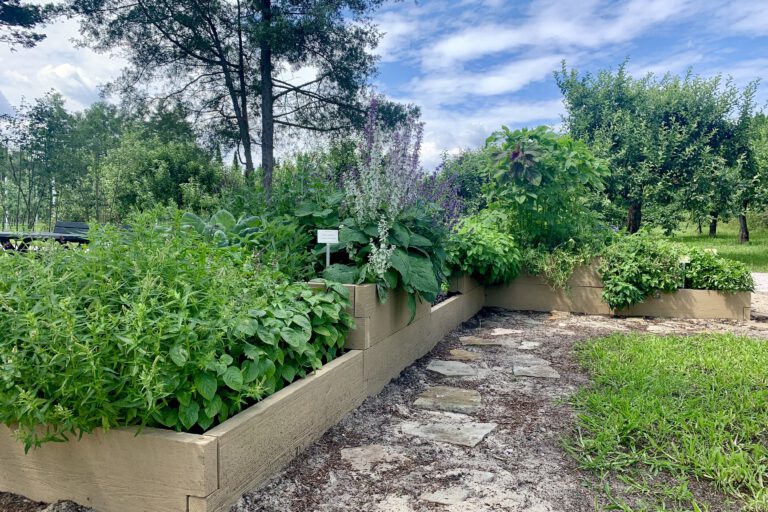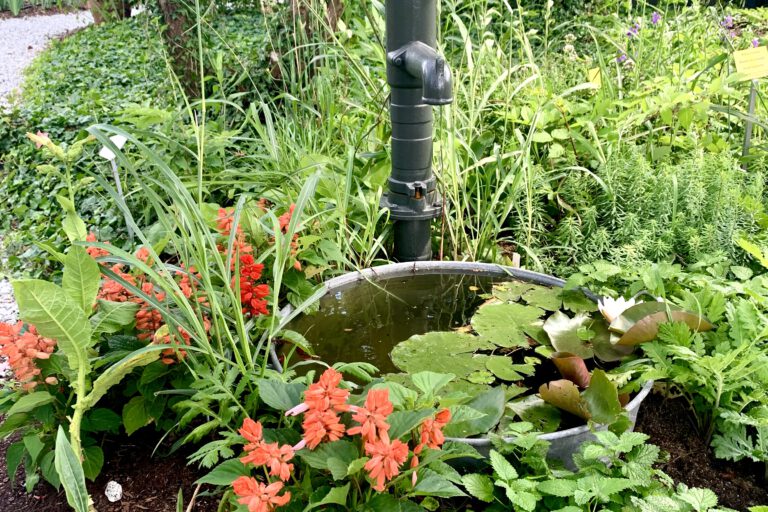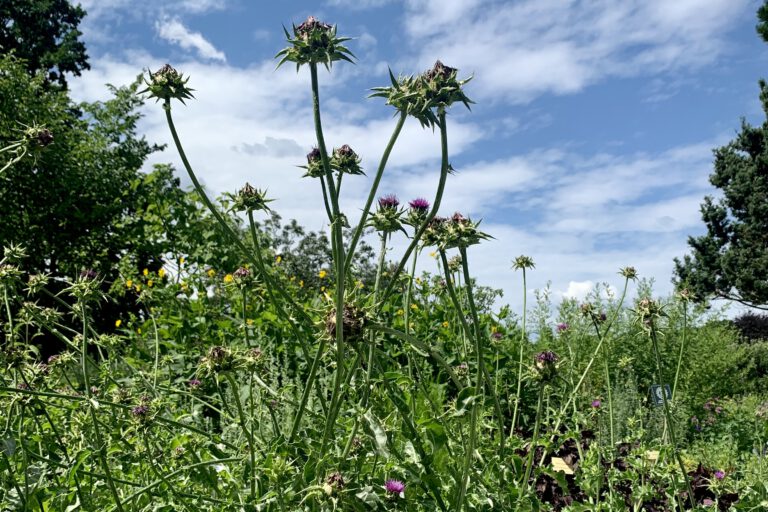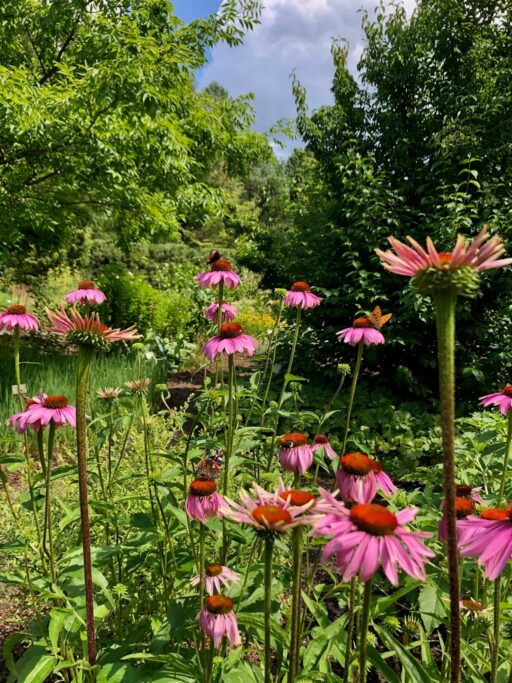- Supervisor: Aldona Czerwińska
- Number of taxa: approx. 300
- Surface: 0.20 ha
The collection of medicinal and spice plants is an interesting collection of plant species used in natural, traditional and folk medicine, as well as homeopathy and aromatherapy. A sizable section of the quarters is also devoted to spice plants.
The collection of medicinal and spice plants is an interesting collection of species used in natural and folk medicine, as well as homeopathy and aromatherapy. A small Mediterranean bed has been devoted exclusively to spice and culinary plants. An atmospheric, folk-style herbal nook forms, together with a collection of vegetables and cereals, the Applied Plants Collection Complex. To meet the expectations of visitors, we have created an easily accessible collection with great educational and scientific value, while keeping in mind the open space for a bit of relaxation and respite.
For hundreds of years, medicinal plants have been the only weapon in the hand of medicine and the only effective raw material for making medicines. Despite the development of the pharmaceutical industry, natural medicine has never been completely abandoned. Medicinal plants are still for many of us a source of irreplaceable raw materials in the kitchen and home medicine cabinet.
Nowadays, plant raw materials have a dual use. They are an ingredient in natural herbal mixtures, tinctures, extracts and infusions, and they are used as a raw material for the pharmaceutical industry to isolate pure compounds with health-promoting effects.
Natural medicine has undoubtedly been experiencing a renaissance in recent times due to the growing interest in environmental issues, as well as healthy and ecological lifestyles. The results of scientific research in recent years in the field of herbal medicine are extremely promising. It turns out that many common, sometimes stubbornly exterminated weeds contain substances in their composition that effectively alleviate the symptoms of many viral and chronic diseases. Species such as common mullein (Verbascum thapsus), St. John's wort (Hypericum Perforatum), traveler's chicory (Cichorium intybus) or biennial evening primrose (Oenothera biennis), although common and not very sophisticated, have their place on every pharmacy shelf.
The collection of medicinal and spice plants has a cognitive and educational character. It provides visitors with a living herbarium and an interesting lesson in botany. It gathers plants used in academic medicine, folk medicine, homeopathy and aromatherapy throughout Asia and North America. Visitors can see species used as far back as the Stone Age, antiquity and the Middle Ages, as well as those whose healing properties are only just being discovered. The collection thus acts as a "living pharmacy" or "living drugstore," where visitors can see and smell plants familiar to us from advertisements for medicines, shampoos and toothpastes, or from the stories of our ancestors.
The pride of the collection is the Siberian, Far Eastern and Central Asian species used in Chinese medicine (TCM), Tibetan medicine and/or folk medicine of the Caucasus, Urals and Siberia, which are rarely presented in Europe.
The collection is also a wonderful place for rest and relaxation, whose abundance of aromas and fragrances, the colors of flowers and foliage, and the idyll of insects circling around them provide an ideal respite from the problems of everyday life. Through appropriate signage, we draw attention to pollinator-friendly species, primarily honey bees, bumblebees and solitary bees. Natural boundaries in the form of low thyme hedges (Thymus pulegioides) or fragrant varieties of sage (Salvia) are in line with the latest ecological trends in landscape architecture. The regular shape of the flowerbeds, taking into account the fragrant qualities of individual plants, creates the feeling of entering a sensory, peaceful garden.
Of interest to some visitors may be taxa considered medicinal in many countries, but not used by our domestic herbal and spice industry, such as bloodroot minor (Sanguisorba minor).
When selecting plants for the collection, those from which well-known spices are obtained were not forgotten, as well as those already encountered only in old recipes or housewife's manuals. Here you can see old substitutes for raisins and dates - prunes (Amelanchier spp.), common juniper (Juniperus communis), with which sandarac, common lembi (oregano) was formerly adulterated (Origanum vulgare) and angelica (Angelica) formerly used in place of garden lovage (Levisticum officinale) and mugwort (tarragon) (Artemisia dranunculus), and even earlier as a medicine against plague, cholera and vampirism.
NOTE
In the collection you will find information plates with the names of individual species and those indicating the presence of harmful and poisonous substances contained in some plants. Indeed, the use of herbs should be preceded by consultation with a specialist. Incompetent use of plant preparations can pose a danger to our health and life!















